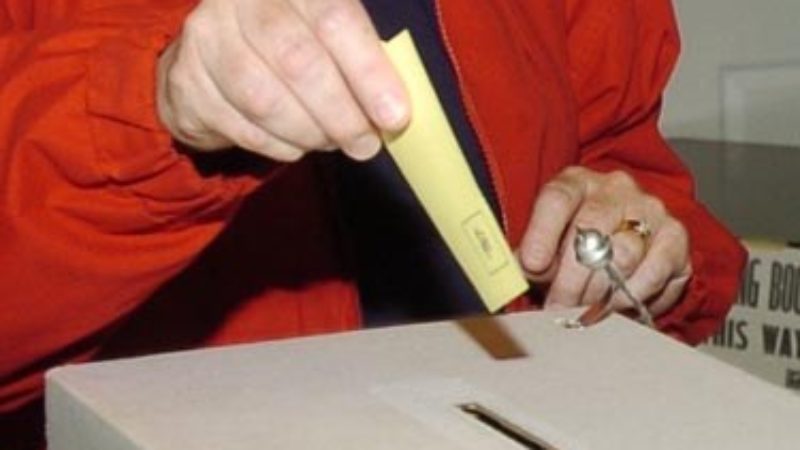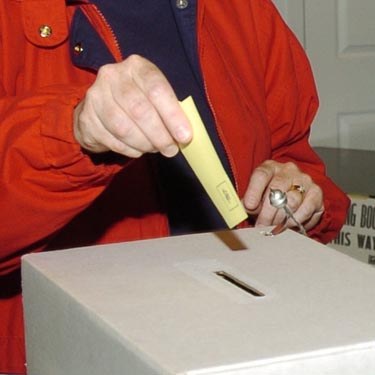

Nigel Mills, the Tory MP caught playing Candy Crush on his i-Pad during a meeting of the Commons Work and Pensions Committee, is one of nearly 150 Tory MPs elected for the first time in 2010. About a third are in marginal seats which Labour will target in May 2015.
Mills is one of the lowest hanging fruits – his Amber Valley seat, where he has a majority of 536 would become a Labour gain with a swing of just 0.5 per cent.
But will he and his fellow 2010 entrants to the Commons benefit from the “first time incumbency effect” as described in a recent commentary by YouGov president Peter Kellner. “For the past three decades”, says Kellner, “there has been a consistent trend for new MPs to do slightly better than the average, the first time they seek re-election. On average, the bonus is worth 2%. On YouGov’s current figures, showing a 5% swing across England and Wales, this means that Tory MPs who were first elected in 2010 would expect, on average, to suffer an adverse swing of just 3%.
The effect, says Kellner, will dent Labour hopes of gaining power. The incumbency effect “applies to virtually all the Tory seats that Labour hopes to gain, for Conservative marginal are precisely the seats where Labour was turfed out last time. New Tory MPs have been able to dig themselves in and become better known locally… Assuming a 2% differential, in line with the historic average, this would allow the Tories to hold on to around 20 seats they would otherwise lose.“
Those four words “first time incumbency effect” are what Tories mutter to cheer themselves up when they look at polls suggesting they will struggle to hold on as the largest party next May. One such is Tory peer and Times columnist Danny Finkelstein, who claims “Although everyone thinks the Tories need a lead to eliminate their disadvantage from constituency boundaries, this fails to take account of the advantage that new incumbents have in their first run for re-election. The best estimate is that these two effects cancel each other out.”
Other pollsters are more sceptical about whether the “first time incumbency effect” will have such a dramatic effect on Tory fortunes and indeed whether it won’t actually work against them.
Harry Lambert on the New Statesman’s website May 2015 bases his analysis on the widely accepted view that parliamentary boundaries give Labour a 35-40 seat advantage. “Not changing the boundaries in this parliament was a catastrophic error for the Conservative Party. It has to win nearly 40 per cent of the vote to win a majority – but no party has done that since 2001.The Tories haven’t won a majority for 22 years and it’s hard to see that changing now that Ukip commands 10-15 per cent of the vote.”
The Kellner/Finklestein thesis rests on historical data, comparisons between results in individual seats and overall national results at successive General Elections. There is no doubt that these provide support for an incumbency effect.
What their critics say, however, is that we don’t have to wait till after May 7th next year to assess the incumbency effect. We have the extraordinary addition to the polling landscape of scores of surveys of individual key seats carried out by the former Tory Treasurer philanthropist pollster Lord Ashcroft. He has spent an estimated £1 million polling key marginal seats.
In a commentary on one set of marginal polls Lord Ashcroft makes it clear that the incumbency effect doesn’t come with the cornflakes. “The MPs who enjoy the biggest boost from incumbency will be the ones who earn it, ” he says.
His surveys of the seats which the Lib Dems are defending suggests that the incumbency effect will largely work favour them and help them to hold off the Tory challenge. The great value of the Ashcroft polling says Mike Smithson of Political Betting is that it ask two questions: one general one about party preference and a second question asking respondents to think of their own constituency.
Nationally, the Lib Dems vote share has fallen from 23% in 2010 to around 7% in recent polls, but says Smithson, “The strength of the LDs seats that it is defending only comes out when the second state seat specific question is put. The precise wording is: “Thinking specifically about your own PARLIAMENTARY constituency at the next General Election and the candidates who are likely to stand FOR ELECTION TO WESTMINSTER there, which party’s candidate do you think you will vote for in your own constituency?” …The difference is enormous. The LDs in the same poll move up from 22% to 36% while all the other parties fall … the approach highlights what appears to be quite a high level of tactical voting by LAB voters.
A broader analysis of Ashcroft’s 22 most recent poll shows a minimal gain for Tory MPs according to the New Statesman’s Harry Lambert, “ It’s unlikely that Ashcroft is missing an effect, especially given that he is so clearly picking one up for the Lib Dems. It appears that the 2010 crop of Tory MPs are not winning over voters in the way many incumbents have in the past.
Another interesting feature of the Ashcroft polling is that it appears to show an incumbency effect for ex-Labour MPs who have stuck around and are seeking re-election where they lost in 2010. Ashcroft has polled the seats of Mike O’Brien, Warwickshire N; Andrew Dismore, Hendon; Nick Palmer, Broxtowe; Bob Blizzard, Waveney; Rob Marris, Wolverhampton SW; David Drew Stroud; Patrick Hall, Bedford; Joan Ryan, Enfield N; and Sally Keeble, Northampton N.
On the second Ashcroft question eight out of the nine saw their lead over the sitting Tory MP widen by between one and five per cent. In only one case did the Tory see some benefit – but he is still heading for defeat according to the Ashcroft poll.
In Northampton, Sally Keeble sees her lead extend from 2% to 4% on Ashcroft’s second question. The seat is number 40 on Labour’s target list and if she wins Labour will almost certainly be the biggest party in the House of Commons.
Finally back to Amber Valley. It seems Tory Nigel Mills will have plenty of time to indulge his passion for Candy Crush post May 2015. Labour’s Kevin Gillott, has a 12% lead on Ashcroft’s first question. His high local profile as deputy leader of Derbyshire County Council helps extend that lead to 14% when electors are asked to think about their own seat.




More from LabourList
LabourList Christmas quiz 2025 round 4: Christmas Connects
EXCLUSIVE: A Christmas message from Hollie Ridley
‘Carol of the Bells: Christmas, Ukraine’s resistance and the fight for freedom’